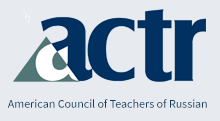Russian Language Journal
Author ORCID Identifier
ORCID1 https://orcid.org/0000-0003-0127-9288
Keywords
directionality of motion, Thinking-for-Speaking, markedness, second language acquisition, L1-Korean L2-Russian, picture description task
Abstract
This paper examines L2 acquisition of directionality of Russian motion verbs by L1-Korean speakers in terms of Slobin’s (1996) Thinking-for-Speaking (TFS) hypothesis and the markedness principle. Although directionality is lexically encoded in the verb in both Korean and Russian, the organization of this concept differs. In Russian, directionality is categorized solely by the feature [+/- directional], whereas in Korean, motion event expressions are distinguished not only by [+/-directional] but also by [+/-multi]. Experiments on L1-Korean, L1- Russian, and L1-Korean L2-Russian speakers demonstrated that (i) in Korean, the presence or absence of an explicit goal plays an important role in verb selection, as manner-of-motion verbs (i.e., zero directionality marking) are typically associated with the absence of an explicit goal, regardless of the type of motion, and that (ii) zero directionality marking for motion events without an explicit goal in L1 Korean is mapped onto non-directional verbs in L2 Russian. These findings support the claim that L1 TFS patterns influence the formation of L2 grammar. The specific way this L1 TFS effect manifests in L2 Russian is shaped by universal principles, such as the markedness principle. The transfer of zero directionality marking in L1 Korean, which is compatible with any type of motion, to “unmarked,” non-directional verbs in L2 Russian shows that markedness relations in the target language exert a strong influence on the L2 acquisition process.
Recommended Citation
Jung, H., Ahn, H., & Cho, J. (2025). Directionality of Motion in Second Language Acquisition: With a Focus on L1-Korean L2-Russian Speakers. Russian Language Journal, 75(1). https://doi.org/10.70163/2831-9737.1503

